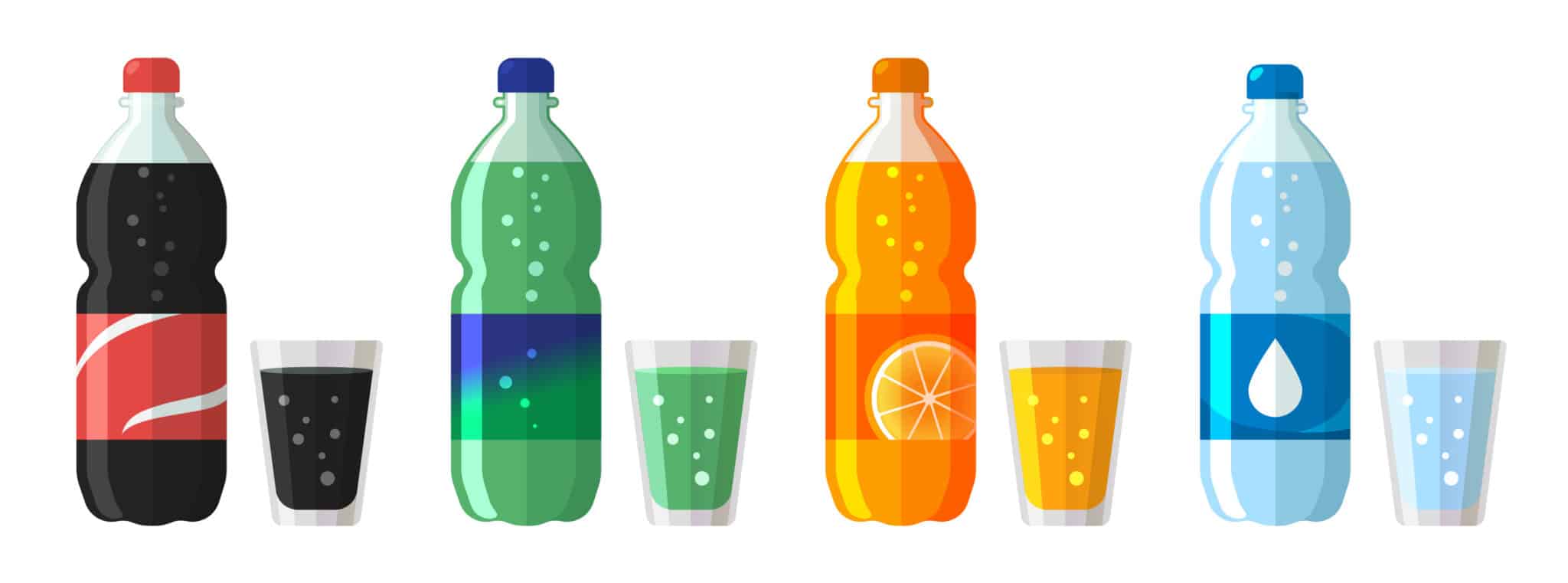
Even if you’ve never been on the wrong end of a shaken soda bottle, you’re aware that these fizzy drinks can explode if shaken or frozen and cause sticky chaos.
So how do you avoid product damage (and major messes) while shipping carbonated beverages?
Why Do Carbonated Beverages Explode When Shaken?
Carbonated drinks contain pressurized carbon dioxide. In an unopened bottle or can, there is an equilibrium between the carbon that has been dissolved into the liquid and the carbon gas floating at the very top of the bottle.
But if you shake the bottle before opening it, some of the carbon that has been floating at the top of the bottle gets suspended in the liquid. This “extra” carbonation stays in larger (though not necessarily visible) bubbles than the already-dissolved carbon. If the container is opened at this point, the large bubbles will rise very quickly to the liquid’s surface, resulting in an explosion. (Source: Kitchn)
Why Do Carbonated Beverages Explode When Frozen?
Liquid expands when it freezes, creating extreme pressure inside the packaging. But frozen soda explosions are not due entirely to water expanding as it freezes, but to the resulting pressure put on an isolated pocket of C02.
Some materials, like flexible plastic, can expand and retract safely, but carbonated beverages in aluminum and glass bottles tend to burst when exposed to freezing temperatures for an extended period.
How to Prevent Carbonated Beverages from Exploding In-Transit?
If shipping carbonated beverages by parcel, USPS has specific guidelines available. But here’s the gist:
- Drinks must be secured with a reliable closure (screw top, soldering, clips, etc.)
- Shipping container or box must be strong enough to protect the contents
- Shipping container must be marked with the type of liquid
- Liquids must be cushioned appropriately in case they break and have something to absorb leakage
If moving pallets or truckloads of carbonated beverages, here is further advice:
Regulate Shipping Temperatures
During the winter months, or when traveling through extremely cold areas, shippers can take multiple steps to protect freight from freezing.
- Leverage temperature-controlled vehicles
- Use technology to monitor product temperature during transit
- Use pallet covers or insulating cargo blankets
- Try isolated heating solutions, such as built-in trailer compartments that facilitate targeted heating
Keep Things Sturdy
Prevent drinks from getting shaken up. While drinks likely won’t explode from being jostled, extreme movement can impact the integrity of the product or cause a pallet to fall over, in which case breakage is possible.
- Ensure the shrink wrap being used is strong enough
- Use more dunnage if you need it (airbags, foam, corrugated cardboard, molded plastic, blankets, etc.)
- Use load locks if you have to (straps, bars, lumbar, etc.)
- Avoid being stacked on top of other loads, if possible
Need Assistance Shipping Carbonated Beverages, Liquids, or Sodas?
Zipline Logistics has an extensive carrier network throughout the U.S. and over 15 years of experience in the CPG retail space. Our strong carrier relationships allow our teams to procure high-quality trucks in markets affected by seasonal temperature fluctuations while keeping you informed of potential problems or changes in the market. Our state-of-the-art shipper intelligence tools allow your brand unparalleled visibility into how your freight is moving. Your transportation goals are our transportation goals.
Do you feel confident in your transportation provider’s ability to care for your product during transit? Reach out to Zipline now to turn your pain points into pride points!